ORGANIC VEGETABLE GROWING
Organically grown vegetables are free of potentially poisonous sprays, artificial colouring or preservatives that may be found in vegetables purchased in the market. Organically grown vegetables invariably taste better.
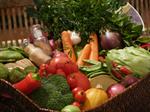 GETTING STARTED
GETTING STARTED
Choose the right site in your garden for growing vegetables.
The vegetable garden should be sited where:
- It receives maximum sunlight (not be shaded by trees and buildings), be well drained.
- It has good soil.
- It is relatively free from weeds and other competing plants.
- It has access to a suitable supply of water.
- It is sheltered from any prevailing winds.
Some compromises may have to be made depending on what you have available.
The size of the vegetable plot will depend to a large extent on how much space you have available, but consideration should also be given to the size and needs of your family, their personal preferences for different vegetables, and the time you have available to tend your garden. As a general guide an area of 80 100 sq. metres can provide a family of four with an adequate yearly supply of fresh vegetables if you grow two or more crops in most parts of the plot each year.

Consider The Following:
What do you want to grow?
What you grow will depend a great deal on your own preferences, as well as environmental factors (e.g. soil, climate), however when deciding what to grow it is worth considering the following:
- Some vegetables produce prolifically in a short time (e.g.radish), while others will be slow to mature (e.g. artichoke). If you are aiming to produce large amounts of vegetables then the majority of your plot should be planted out to the higher yielding vegetable varieties. If the quantity of vegetables you wish to produce is not your major concern or you have plenty of space, then it is worth growing some of less prolific types, as these will often be in shorter supply in the markets, or be generally higher in price than the more prolific varieties.
- Some vegetables are best eaten fresh. They generally lose flavour and nutritional value if stored for any length of time. They are also generally the most expensive to buy due to their short storage life. It is worthwhile then to grow these types of vegetables, which include tomatoes, lettuce, beans and cauliflowers.
What quantities of vegetables can you consume and store?
When deciding what to grow and in what quantities consider the following points.Do you want to produce all of your own vegetable needs, or will you do some supplementary buying? Do you eat a lot of vegetables or are they only a small part of your diet? Do you have sufficient space and suitable conditions (ie: refrigerators, freezers, preserving facilities) to store what you produce? Can you trade or barter your produce with others?
What time do you have available to spend on growing your vegetables?
Remember that vegetable growing is more than just preparing a patch of soil and planting it. You need to have the time available to do all the necessary tasks, and at the right time, such as fertilising, weeding, watering, pest and disease control, harvesting, processing and storage. It is not much use, for example, attempting to control a particular pest once it has already caused major damage to your crop, or to harvest your crops when they are overripe. A small well managed vegetable plot will generally produce bigger, and better quality crops than a larger, poorly maintained one.
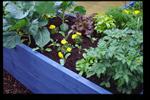
Planning Your Cropping Program
Try to plan for a continuous harvesting of crops. It is not much use having a lot mature in one month and then nothing the next. Try the following:
1. Stagger the Plantings.
Most vegetables can be planted over a three to four month period and achieve relatively even yields
for each planting. Try planting small quantities of each crop at two week intervals. This is easiest for
varieties grown directly from seed, as the seed can be stored until needed. When seedlings are being
used you may need to plant a punnet full of seedlings at each planting at 6 8 week intervals,
depending on the crop you are growing.
2. Some vegetables can only be grown at specific times of the year, while others can be grown over
extended periods, or even throughout the year. Try growing those vegetables with more flexible
growing seasons at those times when the other crops are not available, and concentrate on growing
mainly those crops with limited growing seasons at those specific times.
GETTING THE BEST OUT OF YOUR VEGETABLE PLOT
Provide good drainage.
Good drainage is vital for a successful vegetable garden. If you have clayey soil, or if your site is in a low lying area then prepare a raised growing bed (30cm above the natural ground level). Retaining materials such as sleepers, bricks, treated pine and hardwood timber can be readily used, but be sure to provide sufficient drainage holes at the base of the bed to ensure water can readily pass out from behind the retaining material. If wet conditions prevail then it may be necessary to install slotted pipe or tile drains ("agi" pipes).
Prepare the vegetable bed
The soil should be thoroughly cultivated. Compost should be added and incorporated to a depth of at least 15cm. The soil should then be left for a week or so. The soil should then ideally be tested for pH (simple pH test kits are available from your local nursery), which should be between 6 and 8 for vegetables to thrive. Correct the pH if necessary by incorporating lime or dolomite into the soil to raise pH or sulphur to lower it. Continue cultivation with a fork, a three pronged cultivator and rake until a fine crumbly texture is achieved and all weeds are dead.
Destroy all weeds
Spending time and effort on weed control in the early stages of your vegetable plot's life, will without doubt save an enormous amount of work later on. Any perennial weeds should be dug out and removed with as much root as possible. In particular, remove any bulbs from weeds such as oxalis, nutgrass and the various onion weeds. Annual weeds can be controlled by one of the methods discussed in the section on "Weed Control".
Practice Crop Rotation
Rotating the position of crops each season helps minimise the build up of pests and diseases, as well as spread the demand for particular nutrients throughout the garden bed. A good rule to follow is not to replant a particular part of the vegetable garden with a vegetable of the same type more frequently than every three years. Once a crop has been harvested then simply replant that part of the vegetable garden with a vegetable from a different group as listed below:
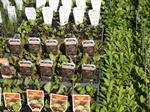
Vegetable Groups:
1. Root crops such as carrots, parsnips, garlic, onion and beets.
2. Legumes such as peas and beans.
3. Cucurbits such as pumpkins, marrows, zucchini, cucumber, cantaloupe and melons.
4. Tubers such as potatoes, sweet potatoes, yams, artichokes and taro.
5. Salad greens such as lettuce, endive , parsley and cress.
6. Winter Greens such as cauliflowers, cabbages, broccoli, spinach, silver beet, kale and Brussel
sprouts.
7. Leafy stems such as celery and chicory.
8. Others such as tomatoes, capsicums, eggplants, peppers and sweet corn.
Mulch
Mulching will help keep weeds in control, help prevent erosion of the soil from around the vegetable roots, and help provide nutrients. Be careful not to have mulch materials directly in contact with the stems, etc. of the vegetables, as this may result in pest and disease problems e.g. stem or collar rots.
Don't overcrowd plants
Because the seeds or seedlings you are about to plant are very small in relation to the final product, there is the temptation to put them too close together. If you do, the result, no matter how good your preparation, will be less than satisfactory. Plants starved for space and light will rarely produce a good crop.
Select and use top quality seed and seedlings
Always check expiry dates on seed packets and choose strong, green seedlings. Many seedling producers "starve" their plants purposely to keep them contained in punnets, so they do not get root bound. Such plants are often leggy and pale in colour (ie: nitrogen deficiency). If you choose such plants treat them with a liquid plant food (e.g. Maxicrop or Nitrosol) that can be directly sprayed onto the foliage.
Use disease resistant varieties.
When selecting seeds look for the disease resistance characteristics of the variety you want. It is much easier to choose the right variety than try to control a disease which is destroying all your hard work.
Feed your crop
Annual vegetables grow rapidly and use a lot of plant food. The compost you incorporated in your seed bed preparation may not be released fast enough to keep up with the plant's capacity to grow. Top dress the soil of your vegetable plot with a suitable organic fertiliser. Plant leaves absorb nutrient very quickly and therefore applying foliar plant food is an ideal way to boost your plants growth, particularly for leafy crops such as lettuce, cabbage, cauliflowers, silver beet, etc.
Control those pests
Regular inspection of your vegetables is a must.The early sighting of pest and disease problems can prompt early action and control with appropriate natural control methods.
Harvesting and Processing Produce
One of the real joys of organic gardening is being able to pick, pull or cut vegetables at just the right time. When they are ready (as determined by your daily inspections and tastings) harvest as much as is needed on a day to day basis. If you have grown more than is required and you want to store the "fruits" of your efforts select the method (freeze, bottle, can, dry) and prepare some days in advance to enable you to harvest and process at the optimum time.
SOME EASIER TO GROW VEGETABLES
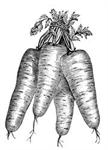 CARROT
CARROT
Daucus carota var. sativa
Carrots are relatively easy to grow, and have the added benefit of being ready to eat at any stage of their growth.
*Feeding
Being a root crop, high levels of Nitrogen are not necessary to the carrot crop. Nitrogen levels should be minimised, and good levels of Phosphorus & Potassium should be maintained. Care should be taken if manure is added to the soil before planting the crop. If the manure is not thoroughly mixed into the soil, then a solid layer of manure can cause the carrot roots to divide and produce substandard results (this is known as fanging) as well as excessive top growth. A soil pH of around 6.3 is required .
*Growing
Depending on variety, carrots can usually be grown all year round, but the seed is mainly sown during the spring and summer months. A well drained light, sandy soil is preferred with full sun, but carrots will grow in partial shade. The seed itself is quite small and fine, and for ease of handling it can be mixed with dry sand to increase its bulk. An alternative method is to place the seeds carefully on wet newspaper, tearing off strips and placing the strips onto the seed bed. The seed should only be lightly covered. The seed bed should be well soaked before seed sowing, and the ground kept moist until germination has occurred.
The resultant seedlings should be thinned out, and even the baby carrots can be eaten rather than discarded. The plants should be kept weed free and this is generally carried out by hand weeding and cultivating with a hoe between rows. Irrigation may well be needed in hot dry weather.
*Problems
Pests that carrots are susceptible to include aphids as well as carrot root fly. Irregular watering will also cause the roots to split open.
*Harvest
Carrots can be harvested at any time of their growing period, but generally they will take from 11 to 15 weeks to mature. They can be stored in the deep freezer or alternatively kept in a 'clamp' of soil or sand.
*Varieties
Carrots are valuable in short, intermediate, and long rooted varieties. Short rooted varieties are more successful than deep rooting types in heavy or medium soil types.
Deep rooting types require a deep, loose, preferably sandy soil. Some varieties can be planted at any time of the year depending on climate.
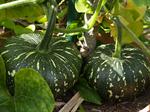 PUMPKIN.
PUMPKIN.
Cucurbita pepo var. pepo
The plants need a large area to spread over, ideally sunny and frost free. If you have limited space, they can be grown on a trellis attached to a fence, but be sure the trellis is strong enough to support the heavy pumpkins as they develop.
*Feeding
Pumpkins are similar in their nutritional requirements to cucumbers. They prefer a soil with a pH of between 5.5 to 7.5, and are heavy feeders. The soil should be built up with manure or compost before planting. Liquid feeding should be carried out when the plants are fruiting.
*Growing
Seeds should be sown in spring after the dangers of frost have passed. The seed can be sown directly into the soil, or into pots and planted out later. Normal spacing allows for 60 cms between plants and 1.5 to 1.8 metres between rows. It is possible to grow the plants on a trellis to save space.
As the plants grow, runners produced should be pinched back to force side shoots and stop the plants spreading too far. These side shoots are more likely to produce female flowers which in turn will develop into fruit. Hand pollination of the female flowers will also increase the number of fruits. Without hand pollination and pinching out of the tip growths you will get fewer but larger pumpkins.
In cooler areas, the practise of applying mulch to the soil not only helps to control weeds, but also warms the soil and gets the crop moving earlier in the spring.
*Problems
The pumpkin can suffer from a number of pests including mites, vine borer, aphis, bugs and nematodes. A lot of these pests can be deterred by planting Nasturtiums as companion plants. Diseases include anthracnose, damping off, downy mildew, powdery mildew, blights, foot rots, wilts and virus. In cool areas the most common problem is mildew in the early autumn, and of course frosts.
*Harvest
Generally you will have to allow 75 to 100+ days from planting to harvest. The crop can usually be harvested when the fruit stem begins to shrivel, and the fruit should be cut with the stem still attached to it. Single fruits of some varieties can grow to several kilograms under extreme conditions. The fruit can be safely stored at 0 to 13 degrees C, and will keep for months in a cool dry place.
*Varieties
Golden Nugget Small plants, golden fruit.
Sweet Dumpling Mini pumpkin, prolific, nutty flavour.
Big Max Huge fruit, can grow to 2 metres in circumference.
Jarrahdale Excellent storage, attractive grey skin and deep orange flesh.
Butternut Smaller vine and smaller pear or cylinder shaped yellow fruit.
Queensland Blue Very popular, fruits later than many others, but gives large fruit which have excellent keeping quality.
Baby Blue Small semi creeping vine and small fruit.
Buttercup Small compact vine plant with medium size fruit.
Butterbush Excellent small fruit on a small vine, good for small gardens, stores well.
Minikin Mini pumpkins good for eating and decoration, keep well, very dry flesh, 8 cms across, yield 6 to 7 fruits per plant.
Windsor Black One of the earliest to fruit.
Potkin Hybrid Can be eaten mature or immature, taste like a cross between potato and pumpkin.
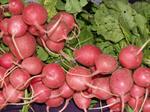 RADISH.
RADISH.
Raphanus sativus
Radishes are a very quick and easy crop to grow with crops maturing in four in warmer months. The seed can be sown all year round, and the crop will tolerate some degree of frost. Shade is needed in hot areas.
*Feeding
They respond well to feeding with fertilisers, and Nitrogen and Phosphorus are important to their growth. Iron is often difficult to absorb due to lack of fine root hairs. A pH of 6 or 7 is ideal.
*Growing
Sow direct into rows to a depth of 1 cm, and with rows about 25 30 cms apart. The seedlings should be thinned out to about 3 5 cm apart to allow the remaining plants to develop. As the crop grows so quickly it is a good idea to sow a few seeds at a time, and at 2 3 week intervals so as to ensure a continuous supply. Radishes respond well to good watering during their growth.
*Problems
Excessive heat will cause the plants to bolt, and if they are left in the soil to long they will go woody. Fusarium wilt can sometimes be a problem, and the foliage may often be attacked by leaf beetles.
*Harvest
From sowing seed to harvest, the time can range from four weeks in the warm weather to seven weeks in the cooler months. Harvest by pulling the whole plant from the ground, and washing off any excess soil. Cut off the tops and store in the refrigerator.
*Varieties
French Breakfast Bright Scarlet roots, 5 8 cms long, tipped white.
Long Scarlet Long red roots with smooth skin.
Red Prince Wilt resistant roots, round short fruit.
White Icicle Crisp white fruits, quick grower.
White Ball Attractive round roots with white skin.
Black Spanish Roots blacked skinned with smooth pungent flesh.
Munchener Bier White roots, firm flesh, strong foliage to 20 cms.
Round Red One of the most popular varieties.
Winter Mild, can be eaten in stir fry dishes, good storage quality, can be up to 20 times larger than salad radishes.
 SILVER BEET.
SILVER BEET.
Beta vulgaris
Also known as Swiss Chard, Silver Beet is very similar to Spinach but easier to grow. It is a cool season vegetable that will tolerate warm weather.
*Feeding
Silver beet responds well to regular feeding. Continuous crops deplete nitrogen from the soil, which will need to be replaced. The soil should be prepared with manure or compost before planting. During the growing season, the plants should be fed with a nitrogenous fertiliser between the rows, but not too close to the plants.
*Growing
The crop will normally grow easily from seed and can be sown in rows in moist soil. These rows should be 45 to 60 cms apart, and the seedlings can be thinned to 10 to 15 cms apart in the row. Regular watering will encourage good leaf growth in dry periods.
*Problems
Leaf chewing pests are the biggest problem, and snails and slugs often need to be controlled, however the crop is reasonably immune from serious pest and disease problems.
*Harvest
The leaves can be either pulled off or cut as close to the base as possible. Silver Beet will store in the bottom of the refrigerator for 2 weeks or more. Regular harvesting seems to encourage regrowth of leaf shoots.
*Varieties
Fordhook Perhaps the most popular, dark green leaves with white stems.
Five Colour Mix Plant stem has red, yellow, orange and cream colours. Easy to grow.
VISIT THE ACS ONLINE E BOOKSTORE
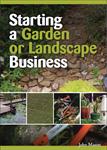 Quality ebooks written by our staff
Quality ebooks written by our staff- Wide range of Horticulture titles by John Mason, author of over 40 gardening books, garden magazine editor, nurseryman, landscaper and principal of ACS.
- Ebooks can be purchased online and downloaded straight away.
- Read on an ipad, computer, iphone, reader or similar device.
- New titles published every month –bookmark and revisit this site regularly
- Download sample pages for free, to see what each book is like.
More from ACS
Ebook - History, taxonomy, species, cultivars, growing, using capsicums.
View eBook
Ebook - comprehensive, easy to read guide on all the aspects of organic growing.
View eBook
For anyone who has completed a PDC -takes you one step further.
View Course
100 hrs, self paced, incorporates a Permaculture Design Certificate
View Course
Course - help the environment by understanding the principles and practices of cultivating plants naturally without the use of chemicals.
View Course